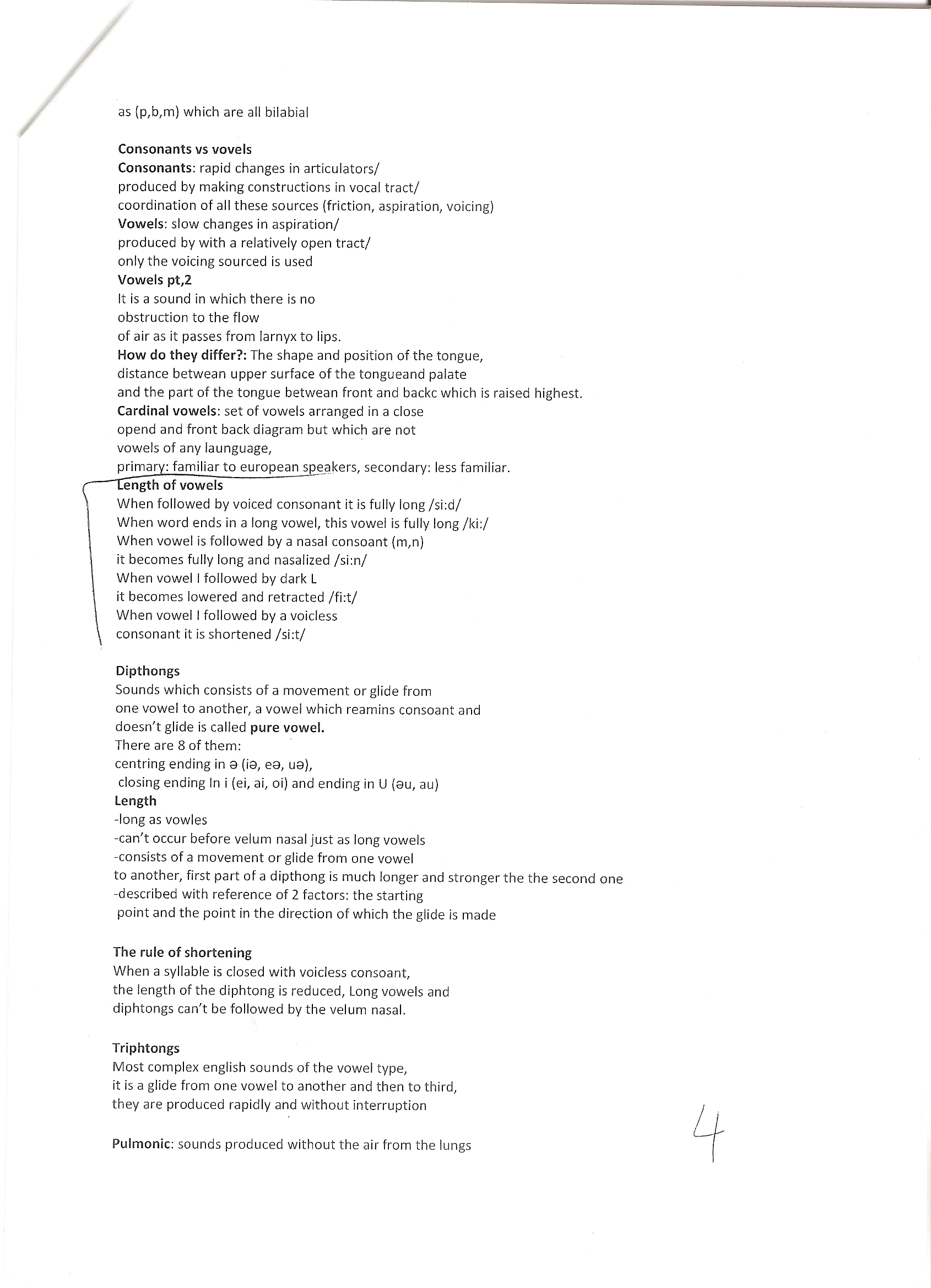80381 skanuj0004 (46)

as (p,b,m) which are all bilabial
Consonants vs vovels
Consonants: rapid changes in articulators/
produced by making constructions in vocal tract/
coordination of all these sources (friction, aspiration, voicing)
Vowels: slow changes in aspiration/ produced by with a relatively open tract/ only the voicing sourced is used Vowels pt,2
It is a sound in which there is no
obstruction to the flow
of air as it passes from Iarnyx to lips.
How do they differ?: The shape and position of the tongue,
distance betwean upper surface of the tongueand palate
and the part of the tongue betwean front and backc which is raised highest.
Cardinal vowels: set of vowels arranged in a close
opend and front back diagram but which are not
vowels of any launguage,
primary: familiar to european speakers, secondary: less familiar. ength of vowels
When followed by voiced consonant it is fully long/si:d/
When word ends in a long vowel, this vowel is fully long /ki:/
When vowel is followed by a nasal consoant (m,n) it becomes fully long and nasalized /si:n/
When vowel I followed by dark L it becomes lowered and retracted /fi:t/
When vowel I followed by a voicless consonant it is shortened /si:t/
Dipthongs
Sounds which consists of a movement or glide from one vowel to another, a vowel which reamins consoant and doesn't glide is called pure vowel.
There are 8 of them:
centring ending in a (ie, ea, ua),
closing ending In i (ei, ai, oi) and ending in U (au, au)
Length
-long as vowles
-can't occur before velum nasal just as long vowels -consists of a movement or glide from one vowel
to another, first part of a dipthong is much longer and stronger the the second
-described with reference of 2 factors: the starting
point and the point in the direction of which the glide is madę
The rule of shortening
When a syllable is closed with voicless consoant, the length of the diphtong is reduced, Long vowels and diphtongs can't be followed by the velum nasal.
Triphtongs
Most complex english sounds of the vowel type,
it is a glide from one vowel to another and then to third,
they are produced rapidly and without interruption
Pulmonic: sounds produced without the air from the lungs
Wyszukiwarka
Podobne podstrony:
skanuj0001 Self-Assessment Moauie i A There are and always have been as many different types of musi
We just speak from the mouth. Hijras aren’t counted [in the polis] as women, after all. Hijras are j
50309 skanuj0002 (46) the vocal folds are touching each other air passing through the glottis will c
al creatures 46 troirs nose boil runny nose monster Magical creatures are all unique. Have fun
skanuj0001 Self-Assessment Module o A There are and always have been as many different types of musi
skanuj0009 (46) d. częstość występowania choroby w Europie północnej wynosi 1 na ok. 2500 urodzeń, a
więcej podobnych podstron